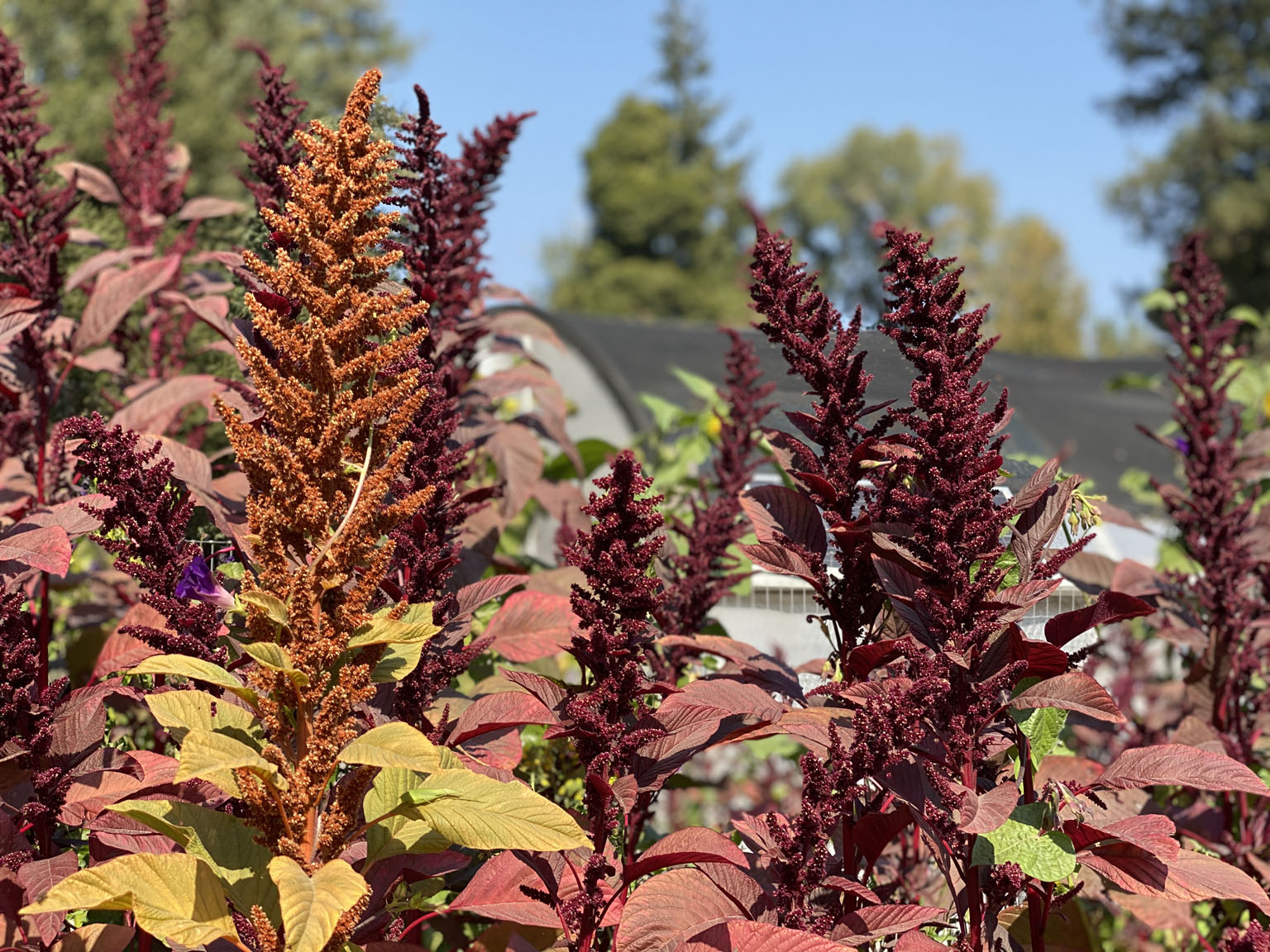- Continue Shopping
- Your Cart is Empty
Garden Notes November 2019
 The garden needs weeding, but it is thriving in its own messy way. The compost that we make has recently been spread over the entire garden, to nourish and prepare the soil for the next season’s planting. The tall burgundy amaranth plants are towering in the far corner of the garden, just in time to be harvested for our wreath and garland class that will be held on November 10th. They look so very autumnal, mingled with the orange cosmos, all volunteers from a space that I cleared to plant and then did not get to. Nature provides! When the amaranth comes out, we’ll have more room in the garden to add some more late fall plantings, and the impetus to replant the front garden as well, which is full of herbs and alpine strawberries but not much else, since we took out the tomatoes and the zucchini last month.
The garden needs weeding, but it is thriving in its own messy way. The compost that we make has recently been spread over the entire garden, to nourish and prepare the soil for the next season’s planting. The tall burgundy amaranth plants are towering in the far corner of the garden, just in time to be harvested for our wreath and garland class that will be held on November 10th. They look so very autumnal, mingled with the orange cosmos, all volunteers from a space that I cleared to plant and then did not get to. Nature provides! When the amaranth comes out, we’ll have more room in the garden to add some more late fall plantings, and the impetus to replant the front garden as well, which is full of herbs and alpine strawberries but not much else, since we took out the tomatoes and the zucchini last month.
Soon it will be time to cut back the raspberries as well, though they have been steadily providing just a few fruits here and there for months now. We haven’t wanted to miss out on a single fruit, but it is time, oh yes, it is time. We will also gather seeds from a very interesting bachelor button plant that seeded itself among the raspberries; a hybrid of the blue and dark purple varieties, it flowered in a rich, deep navy blue/violet color that we have not seen before. Hopefully, we can sow some of these seeds next spring, and see more of that unusual color!
Chard and kale have been planted near the stop sign and are thriving, and much of the garden has been mulched with the rakings from our hay barn. This is a mixed blessing, as the mulch holds moisture well and breaks down into lovely compost—but it also sprouts grass seed everywhere. When we take out the amaranth, we’ll mulch the rest of the garden to hold in the moisture that we know (we hope!) is coming soon from the winter rains. And even those grass weeds that sprout will be pulled up in turn and let to break back down, a full circle of compost and return.
It’s late in the season to plant some things, but not too late for others! We’ll tuck in a few bulbs of garlic, and some shallots as well, as well as some peas and lettuce.
 Lettuce does beautifully in the winter, and if the warmer weather holds, the peas may get a head start. If the nighttime temperatures are too cool, the peas will just slowly develop their root systems, while not doing much on the surface, but when spring comes again, they will spring into life. This is also a great way to overwinter many cool-season annuals, such as sweet peas and snapdragons. They won’t flower this year but will be ahead of the game in the early spring. We’re hoping to grow some more flowers in the demo garden this next year, to use in wreath classes as well as feed the bees, butterflies, and other beneficial insects that buzz about the garden.
Lettuce does beautifully in the winter, and if the warmer weather holds, the peas may get a head start. If the nighttime temperatures are too cool, the peas will just slowly develop their root systems, while not doing much on the surface, but when spring comes again, they will spring into life. This is also a great way to overwinter many cool-season annuals, such as sweet peas and snapdragons. They won’t flower this year but will be ahead of the game in the early spring. We’re hoping to grow some more flowers in the demo garden this next year, to use in wreath classes as well as feed the bees, butterflies, and other beneficial insects that buzz about the garden.
Over to You
It’s part of our mission here at Mountain Feed to help you grow beautiful, sustainable, gardens whether you have sprawling acres of farm or just a tiny plot along the highway. Stop by and say hello on Facebook, Twitter, Instagram or Pinterest. Or, as always, you can do it the old-fashioned way and come by the store to speak with one of our in-house experts.
